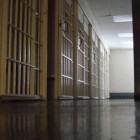
This Budget Season, Texas Must Turn to Counties for Juvenile Justice Effectiveness
|
Hot, muggy August is actually a breath of fresh air. It’s a fresh start for Texas kids heading back to school, and the beginning of the budget process for Texas agencies as they work to prepare their budget requests for the new biennium. In particular, the Texas Juvenile Justice Department has a unique opportunity for a fresh start through a renewed emphasis on county and community-based placements for juvenile offenders to put more troubled Texas youths on the right track—and this can be done even while cutting the overall size of the budget. Multiple news reports and an internal audit this summer have detailed rampant safety issues within state lockups for juvenile delinquents. While juvenile lockups certainly cannot and should not be pleasant places to stay, they must provide a basic level of security for minors.








